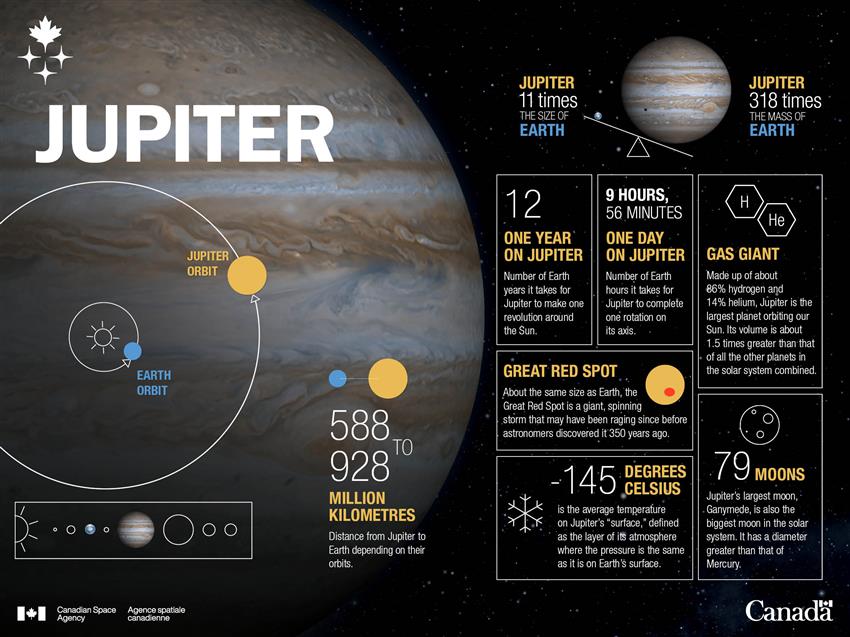Jupiter in numbers – infographic

Description
Infographic about Jupiter, the largest planet in the Solar system. (Credit: Canadian Space Agency)
Text version
This infographic features an image of Jupiter along with a series of facts that highlight some of the differences between Jupiter and Earth.
- A graphic shows that Jupiter and Earth orbit the Sun in the same direction.
- The distance from the Earth to Jupiter ranges from 588 to 928 million kilometres depending on their orbits.
- Jupiter is 11 times the size of Earth.
- Jupiter is 318 times the mass of Earth.
- It takes Jupiter 12 Earth years to make one revolution around the Sun.
- It takes Jupiter 9 hours, 56 minutes in Earth time to complete one rotation on its axis.
- About the same size as Earth, Jupiter's Great Red Spot is a giant, spinning storm that may have been raging since before astronomers discovered the planet 350 years ago.
- The average temperature on Jupiter's "surface" is -145 degrees Celsius. The surface is defined as the layer of its atmosphere where the pressure is the same as it is on Earth's surface.
- Jupiter is a gas giant. Made up of about 86% hydrogen and 14% helium, Jupiter is the largest planet in our solar system. Its volume is about 1.5 times greater than that of all the other planets in the solar system combined.
- Jupiter has 95 moons. Jupiter's largest moon, Ganymede, is also the biggest moon in the solar system. It has a diameter greater than that of Mercury.
File size: 1.69 MB
Image size: 2400 x 1800 pixels
Resolution: 300 dpi
Image date: January 21, 2020
Copyright / Permission to reproduce
- Date modified: